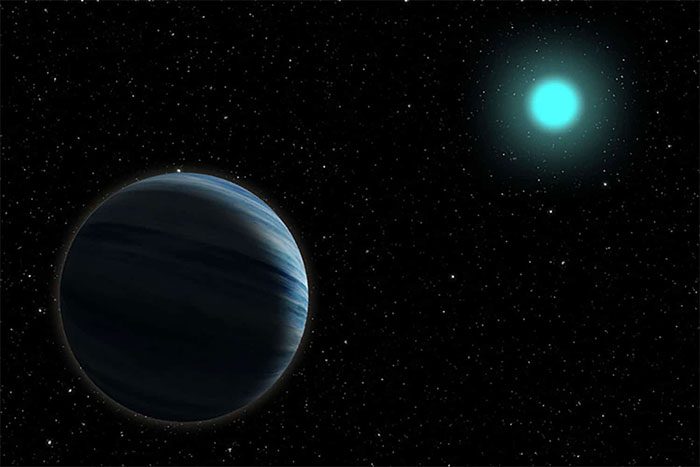The unfortunate planets and the chilling actions of the brightest stars in the night sky have recently been uncovered by American scientists.
According to SciTech Daily, over the past 25 years of searching for exoplanets, scientists have made thousands of discoveries of various kinds, but more than 99% of these are planets orbiting small to medium-sized stars.
The brightest stars in the sky—massive blue A-type stars like Sirius and Vega—were expected to host giant gas planets, yet they appear to have empty surroundings.
A team of scientists from the University of California, Berkeley, sought answers, and their findings are indeed startling. They discovered a planet that belongs to the rare 1% category, orbiting a hot giant star. The planet is named HD 56414 b, approximately the size of Neptune.

HD 56414 b and its “monster” parent star – (Image: UC BERKELEY)
This planet orbits quite far from its parent star and seems to exist only for a short time—revealing the bizarre behavior of its parent star: it “devours” the very gas planets it produces.
In fact, these planets do not completely disappear; they are left with only a small rocky core, which can no longer be detected by astronomical observation tools. A-type stars emit extremely strong radiation, thus “stripping” the atmosphere of any planets that are close to them.
For gas planets, the atmosphere constitutes the majority of the sphere, while the rocky core is usually very small. Therefore, a gas planet that is “stripped” becomes too small and dark.
Unlike planets orbiting F, G, K, and M-type stars, which typically receive large amounts of both X-rays and ultraviolet rays, planets orbiting A-type stars suffer more intense radiation in the near-ultraviolet spectrum than X-ray and ultraviolet radiation, and are also more severely damaged. Our Sun is a G-type star, which is fortunate for Earth.
The research was recently published in Astrophysical Journal Letters.





















































